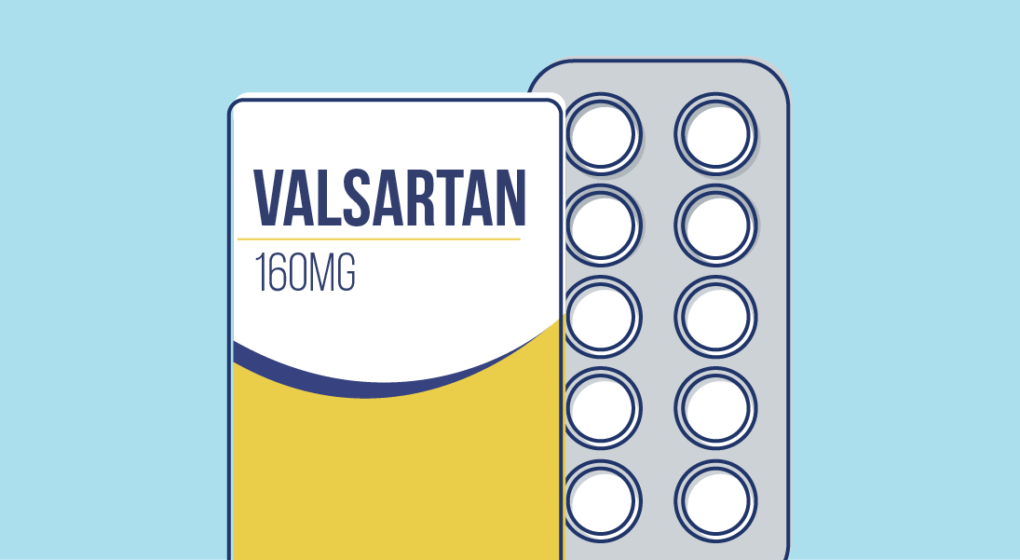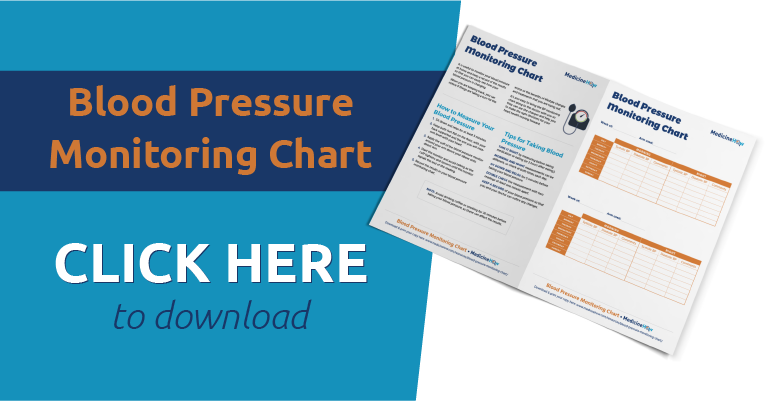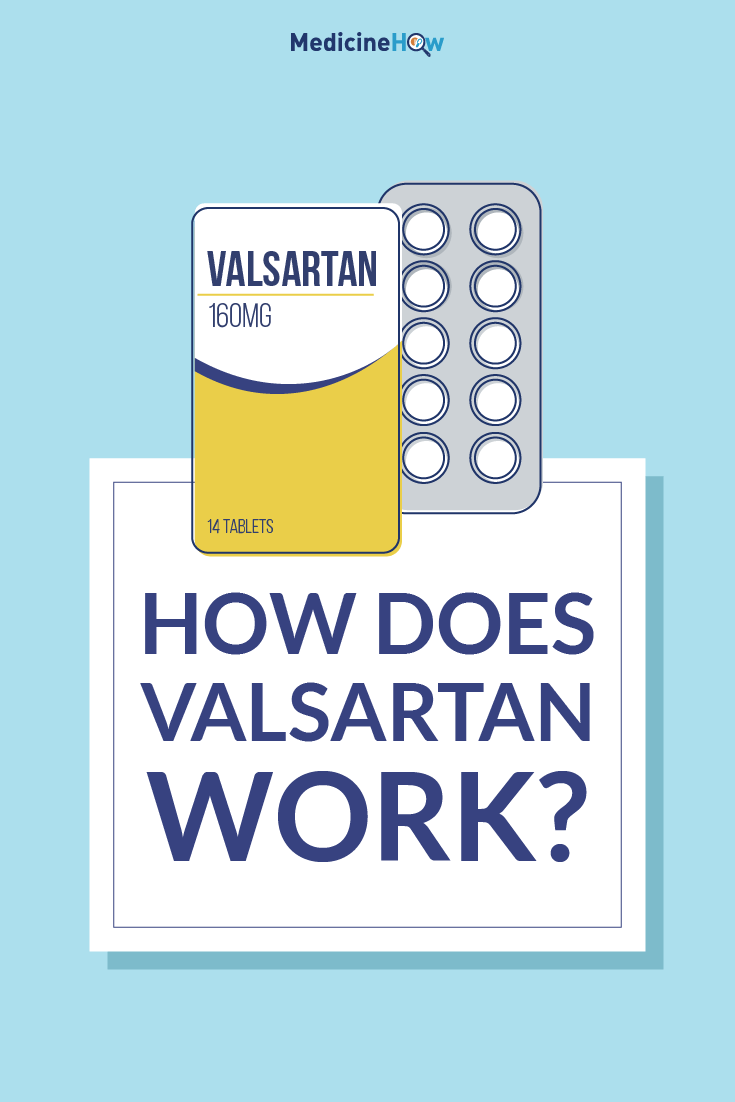
Valsartan works by stopping a hormone called angiotensin II from activating a receptor in the body, which normally causes a slight increase in blood pressure when it gets too low. When you take a sartan drug like valsartan, the hormone can’t work as well as usual and your blood pressure decreases, which helps to manage hypertension. It can also sometimes be used to in heart failure or after a heart attack.

Brand Names and Doses
![]() Valsartan is the genic name, the name of the active drug found in the medication, but it’ also known better by the brand name, Diovan. It is available in four different doses: 40 mg, 80 mg, 160 mg and 320 mg.
Valsartan is the genic name, the name of the active drug found in the medication, but it’ also known better by the brand name, Diovan. It is available in four different doses: 40 mg, 80 mg, 160 mg and 320 mg.
Most people begin with the lower 40 mg dose, which can gradually be increased over a few weeks or months until the blood pressure is well-managed. This helps to reduce initial side effects that may occur with this medicine.
It is also available in combination with other medications, such as amlodipine and hydrochlorothiazide.
Exforge is the brand name of the combination medication with amlodipine, and is available in five different doses:
- Valsartan 80 mg / Amlodipine 5 mg
- Valsartan 160 mg / Amlodipine 5 mg
- Valsartan 160 mg / Amlodipine 10 mg
- Valsartan 320 mg / Amlodipine 5 mg
- Valsartan 320 mg / Amlodipine 10 mg
Co-Diovan is the brand name of the combination medication with hydrochlorothiazide. It is available in five different doses:
- Valsartan 80 mg / Hydrochlorothiazide 12.5 mg
- Valsartan 160 mg / Hydrochlorothiazide 12.5 mg
- Valsartan 160 mg / Hydrochlorothiazide 25 mg
- Valsartan 320 mg / Hydrochlorothiazide 12.5 mg
- Valsartan 320 mg / Hydrochlorothiazide 25 mg
Exforge HTC is the brand name of the combination medication with amlodipine and hydrochlorothiazide. It is available in five different doses:
- Valsartan 160 mg / Amlodipine 5 mg / Hydrochlorothiazide 12.5 mg
- Valsartan 160 mg / Amlodipine 10 mg / Hydrochlorothiazide 12.5 mg
- Valsartan 160 mg / Amlodipine 5 mg / Hydrochlorothiazide 25 mg
- Valsartan 160 mg / Amlodipine 10 mg /Hydrochlorothiazide 25 mg
- Valsartan 320 mg / Amlodipine 10 mg / Hydrochlorothiazide 25 mg
What type of drug is it?
![]() Valsartan is a type of drug known as a sartan, also sometimes called angiotensin receptor blockers (ARB) or angiotensin receptor antagonists (ARA). Other medicines that are in the same class and work in the same way are:
Valsartan is a type of drug known as a sartan, also sometimes called angiotensin receptor blockers (ARB) or angiotensin receptor antagonists (ARA). Other medicines that are in the same class and work in the same way are:
How does it work?
![]() Valsartan works by blocking the angiotensin II hormone from binding to a receptor in the body, stopping it from working as normal to increase the blood pressure when it gets too low.
Valsartan works by blocking the angiotensin II hormone from binding to a receptor in the body, stopping it from working as normal to increase the blood pressure when it gets too low.
In a healthy person, angiotensin II is important to maintain the balance of blood pressure in a healthy range. When the pressure gets too low, angiotensin II is produced binds to a receptor, causing certain effects in the body to help to raise the blood pressure slightly. Firstly, the smooth muscles surrounding the blood vessels contract, narrowing the passageways. Secondly, the kidneys reabsorb more water, increasing the blood volume. With more blood traveling through thinner vessels, the pressure is going to increase and restore the normal balance of blood pressure.
When you take valsartan, angiotensin II doesn’t activate the receptor as well and the normal effects can’t occur as they usually would. As a result, the opposite happens:
- The muscles around your blood vessels relax, creating more space for the blood passing through.
- Your kidneys reabsorb less water and you excrete more in your urine, reducing the volume of blood.
Less blood pumping around larger blood vessels means the pressure will become lower. If you think of it like a plumbing system, your heart will be under less stress to pump blood around the body.
Side Effects
![]() Sartans affect the body in various ways and there are several side effects that may occur when you take valsartan.
Sartans affect the body in various ways and there are several side effects that may occur when you take valsartan.
Low blood pressure (hypotension)
The most common side effects happen when valsartan is working too well and you end up with low blood pressure. You might notice:
- Headache
- Tiredness
- Dizziness
- Flushing
This is most common when you first start taking it or after a dose increase. After a few days, this effects usually get better because your body gets used to the medication. If you still notice them after a week, your blood pressure may be too low because the dose is too high for your body. You can simply check your blood pressure at a pharmacy and ask your doctor if you need to change or reduce the dose.
Excess Potassium (Hyperkalaemia)
Valsartan causes more water to be excreted in the urine than usual, which can upset the balance of salts such as potassium in your body. Less potassium is excreted and it can build up inside your body, causing you to feel tired and weak. You can ask your doctor for a blood test to check if you have high potassium levels if you think this may be affecting you.
Cough
Some people also get a dry cough – if this affects you, you can talk to your doctor about alternative medication options to manage high blood pressure.
Cautions
![]() There are a couple of things you should be aware of before you start taking valsartan, which are listed below:
There are a couple of things you should be aware of before you start taking valsartan, which are listed below:
Angioedema – Swelling of your mouth and face, which is particularly dangerous if the airways become blocked. See a doctor immediately if this occurs.
Renal Impairment – Changes to the kidney function can increase the risk of renal impairment, especially when valsartan is used with other medications such as NSAIDS and diuretics. If you have poor kidney function, an alternative medication for hypertension is likely to be safer.
Stopping Suddenly – If you suddenly stop taking valsartan, you may end up with even higher blood pressure, called rebound hypertension, because your body has adapted to taking the drug each day. If you want to stop, it is best to gradually reduce the dose over a few weeks.

Drug Interactions
 Lithium + Valsartan Interaction
Lithium + Valsartan Interaction
Valsartan can decrease the amount of lithium that is excreted from the body and increase the risk of side effects. The dose of lithium can be reduced to help manage this, or a different antihypertensive medication can be used.
Loop Diuretic + Valsartan Interaction
Taking a loop diuretic drug with valsartan can increase the risk of renal impairment and blood pressure that is too low, particularly for the first few doses. It is best to take a lower dose or to stop taking the loop diuretic for a few days when beginning to take this medication.
NSAID + Valsartan Interaction
NSAIDs and valsartan can sometimes be used together in young and otherwise healthy patients, but it might not work as well to reduce your blood pressure and can lead to renal impairment.
Thiazide Diuretic + Valsartan Interaction
Taking a thiazide diuretic and valsartan together increases the risk of renal impairment and blood pressure that is too low, particularly for the first few doses. Using a lower dose is okay for some people but the combination is not recommended for others – you should talk to your doctor if you’re worried.
Pregnancy and Breastfeeding
![]() Valsartan should not be used by women who are pregnant or planning to become pregnant. This is because it can cause birth defects early in the pregnancy and may cause renal dysfunction to the fetus later in the pregnancy.
Valsartan should not be used by women who are pregnant or planning to become pregnant. This is because it can cause birth defects early in the pregnancy and may cause renal dysfunction to the fetus later in the pregnancy.
It is not recommended to take it while breastfeeding because there is limited research data available and we don’t know if it is safe for you or your baby.
Pin it!


